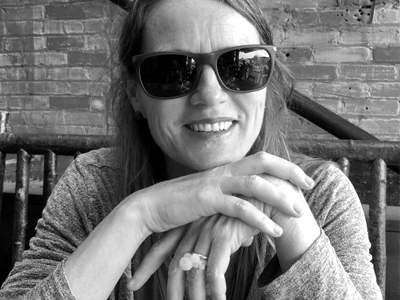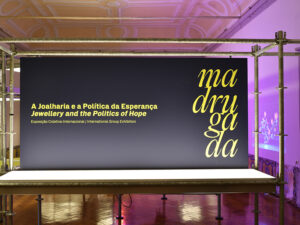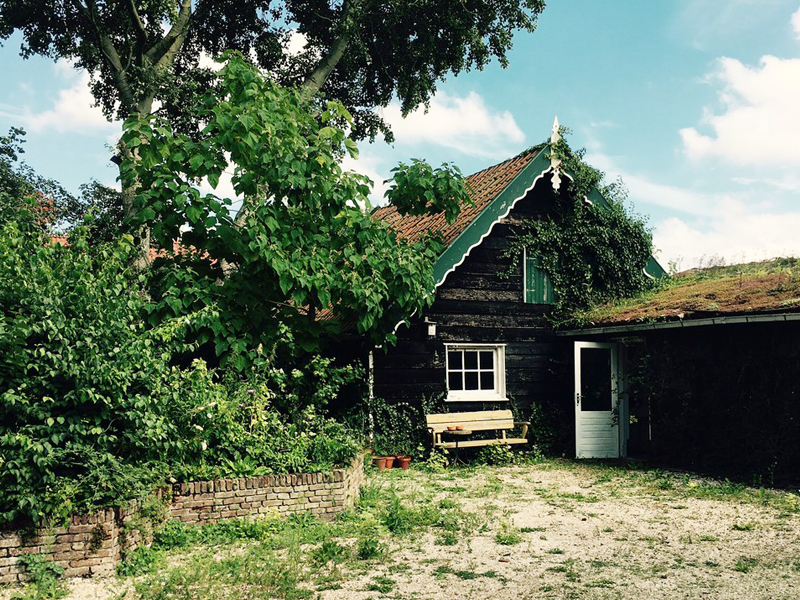
Carolina Apolonia is a jeweler based in Middelburg, Netherlands, whose work has been shown in a number of exhibitions in Europe as well as Asia. She trained at the Royal Academy of Art in Antwerp, Belgium, and was the owner of gallery io for contemporary jewelry and object in Middelburg from 2007 to 2012. Her work examines interior spaces and boundaries through abstracted constructions of buildings or rooms. Her current show at Gallery Beyond allows her works to take flight with more aerodynamic forms and the inclusion of winged elements.
Katja Toporski: You have a degree from the Royal Academy of Art in Antwerp, a place famous since the 1980s for its fashion scene. Your previous works have a strong connection to fashion with the use of materials like fabric, leather, or parchment, and stitching to connect the pieces as well as to add line elements. Could you talk about the backstory of that and how this evolved in your work?
Carolina Apolonia: I fell in love with textiles and leather long before my education in Antwerp. It was my mother who taught me how to sew on her old machine when I was about six years old, and I’ve always loved the feel of textiles and the process of sewing. Especially stitching by hand: I love its slow and time-consuming process, being able to control the shape of an object or piece of clothing with a needle and thread. I like to build, mend, and repair things.
About five years ago at a workshop with Willemijn de Greef in France, I bought some old books at a local market and started piercing and sewing pieces of the covers. To me it opened a new world; suddenly I was able to “build” architectural shapes using stitching.
The books, their stories, added another dimension. Not just their smell and the feel of paper, but old books carry stories: the stories themselves and the tales of the people that hold, read, and cherish them. The sewing and building of book covers, combined with silver, resulted in a collection of shelters.
After that I started working with different kinds of leather and parchment for my Arrhythmia collection. At that time I was going through a difficult period where I had to deal with grief and loss. Leather and parchment are materials very close to the human skin. By hand-stitching these materials to silver, I created structures to be worn almost as an extension of the body, as outward expressions of what was going on inside.
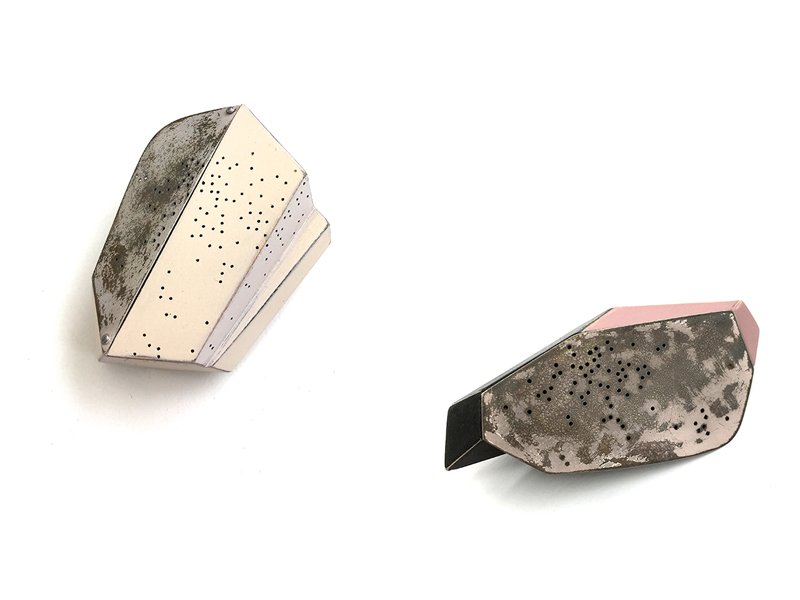
Somewhat related to that: You describe sewing as a meditative process—how important is process to you? In what way do you consider meditation important in craft?
Carolina Apolonia: Process is very important to me. It’s that wonderful journey where everything is possible. When I’m at work in my studio, it often feels like a long meditation, especially when I’ve just started working on a new collection. When I sit at my table for hours and just write about what’s keeping me occupied in my head, things I’ve dreamed of, stories I’ve heard. And ideas and shapes slowly start to emerge. Then I begin to draw, often intuitively.
I experience that intermittent meditative state at a later stage as well: when I have a clear idea about how I want to build and construct a piece and I’m happy with the prototype. When my hands seem to automatically know what they have to do while the only sound you can hear is the sound of materials and tools: hammering, sawing, filing. Nothing beats the wonderful experience of constructing and building a piece. It takes me someplace else and I completely lose track of time.
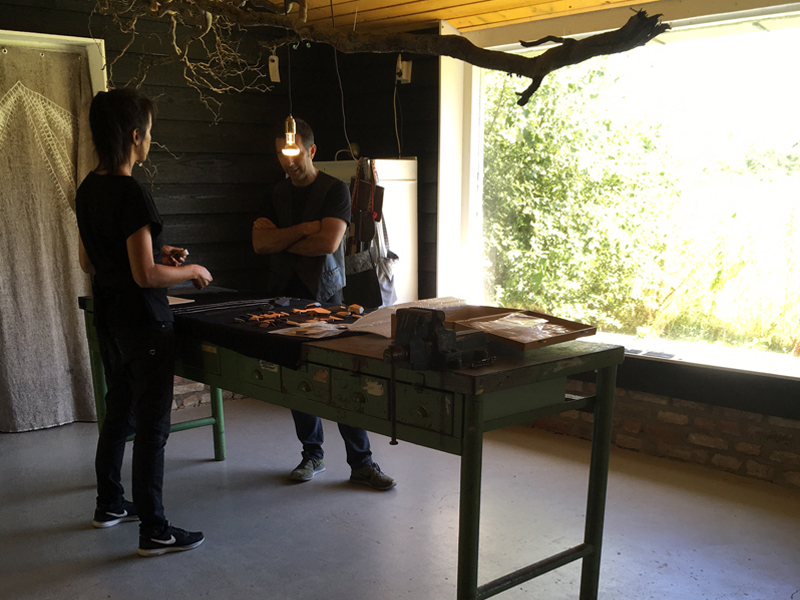
You were the owner of gallery io in Middelburg, Netherlands, for five years, partially overlapping with your time as a student at the Royal Academy. How has that experience influenced your work, and was there ever a conflict between the two different roles of artist versus gallery owner?
Carolina Apolonia: Fortunately there’s never been a conflict. The gallery was the result of a few things that came together. Being a jewelry artist means working alone most of the time—which I love—but I felt the need to connect with other makers. Not only people within the jewelry field, but all kinds of makers. To create a place where we could sit and talk about each other’s work, share expertise and ideas. And showcase our work at the same time.
I happened to have access to a nice space in the historic center of Middelburg, so we started the gallery with a group of four. And you know it’s so much easier to talk to visitors/potential buyers about someone else’s work, let alone selling it.
The whole experience has been great fun and many other makers would come by, connecting, hanging out, talking about their work. We’ve organized workshops and exhibitions, which was what I really enjoyed doing: finding new and interesting ways to bring someone’s work into the gallery and blending it with our own. Finding out the stories behind the pieces. Getting to know someone better through their work. Most of the time artists have very specific thoughts on how they want to display their work, and it’s always a wonderful challenge to create a good exhibition together. The only downside of that was that it took a lot of time and energy. I hardly had any left to put into my own work.
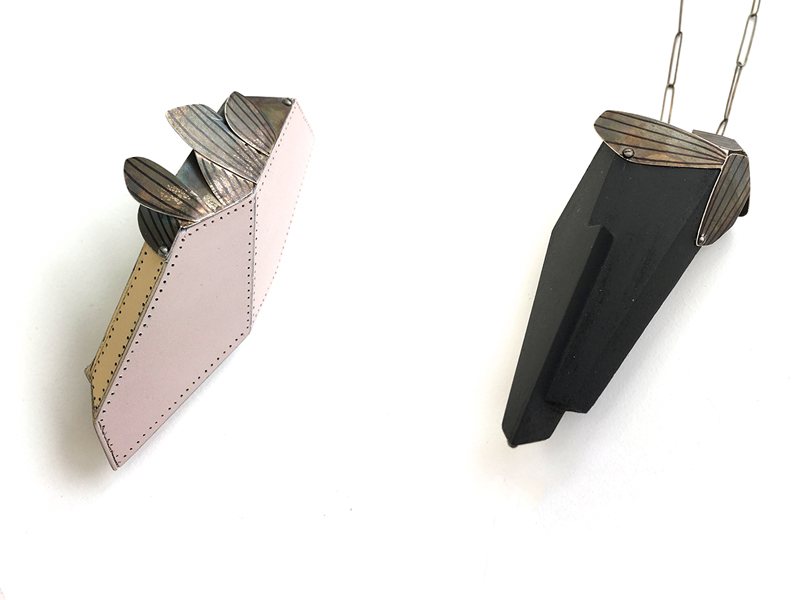
Your current show at Gallery Beyond is comprised of pendants and brooches that are composed of scratched blackened metal panels with faceted fiberboard elements in soft pastel colors. Some of these panels have holes in them that follow their edges like the seam in a cobbler’s raw materials, on others the holes seem to be arranged like words written in Braille. Is there a hidden message in those pieces that we as viewers should decipher? Or do they point to an abandoned part of your process (the empty seam)?
Carolina Apolonia: In my previous work I’ve used similar patterns of holes, and I’ve been asked this question a few times before: whether it’s Braille and what it means. Well, I do quite like the thought of that, but in fact the sometimes-patterned perforations have nothing to do with Braille.
The idea behind these patterns of small holes in the silver actually came from looking at skylines, apartment buildings, and factories at night. My favorite time to be outside is just after sunset. When the day changes its pace. When some people are still at work, and others have just come home. When I go for a long walk and look at the lights behind those windows and wonder what’s going on behind them; how people feel and live their lives and in their little habitats. All these small individual worlds that form big colony-like structures that are buildings and cities. Are they happy? Do they even know each other? What are their hopes and dreams? Do they feel safe? Then bigger questions come up: Why are we here, what is the meaning of life?
It sometimes overwhelms me. But it’s a lonely and melancholic feeling that is strangely beautiful.
Some of the works in your show have abstracted wings as part of their composition; others are arranged like the folded-up wing of an insect. But those wings appear to be nonfunctional and incapable of lifting the comparatively heavy crystal form they’re attached to. Are you intending this group of works as a commentary on one’s inability to fly, while perhaps ignoring the presence of wings?
Carolina Apolonia: I wanted to create movement. Give the forms or structures the ability to fly. Bring lightness to the often-heavy-looking structures that I build. I love science-fiction movies and I dream of starships, floating houses, and flying boats. Those dreams are reflected in this collection.
This group of works reflect my desire to live in a better, kinder world. A place where we are not constantly being watched and judged, where we can move more freely. I also want to express that in order to achieve that, one should not be passive. Keep fighting for what is good and right, strive for more kindness and respect toward each other. And above all: never give up. Find your wings when you feel like you’re stuck in a cage.
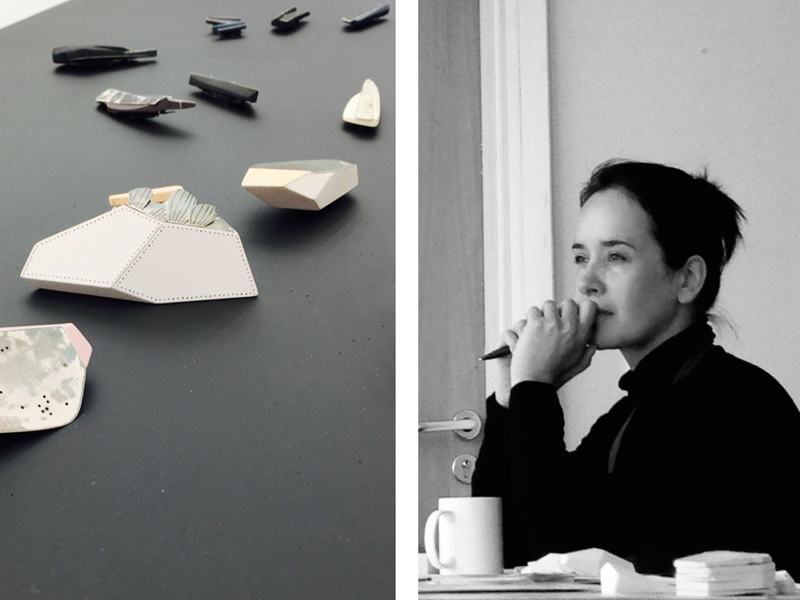
Where does your fascination with flying and aerodynamics come from, and how do you relate this to jewelry?
Carolina Apolonia: I have always been fascinated with machines that can fly. It’s amazing how it works: lift and drag. I’ve taken lessons to learn to fly a single-engine plane. There’s no greater feeling than that moment when you’re in control of a small but heavy piece of old and very noisy machinery, going full speed on a bumpy local runway, and the plane lifts its wheels off the ground.
Flying takes me into another dimension, it gives me an immense sense of freedom.
It’s obvious that the shapes of airplanes, and their wings in particular, made their way into my jewelry practice. I wanted to re-create that sense of movement and freedom.
It sounds like you rely a lot on your intuition, your inner world, when translating your ideas into practice. Can you talk a little bit about your creative process for this latest group of works?
Carolina Apolonia: Well, I always start a new group of works with a lot of reflecting and writing. About my personal life, where I stand, who I am, what I hope for and desire. What are my regrets and disappointments? What keeps me awake at night? In my work there’s always a personal and sometimes hidden story to be told. These thoughts translate into material and form.
This collection is all about individuality versus group, which was a recurring theme in the writing and research I did. At the exhibition at Galerie Beyond, they are displayed as a group, like a flock of starlings. And I haven’t titled the individual pieces; it seemed like the right thing to do.
The pieces in the exhibition are kept to light shades of rose and beige in combination with darker grays and black. Could you talk about your choice of color for this series?
Carolina Apolonia: I’ve tried and tested a lot of colors, bright blues and greens and shades of orange and yellow, and not only for this collection. But somehow I always end up with blacks, dark grays, and skin tones. They suit me and my work.
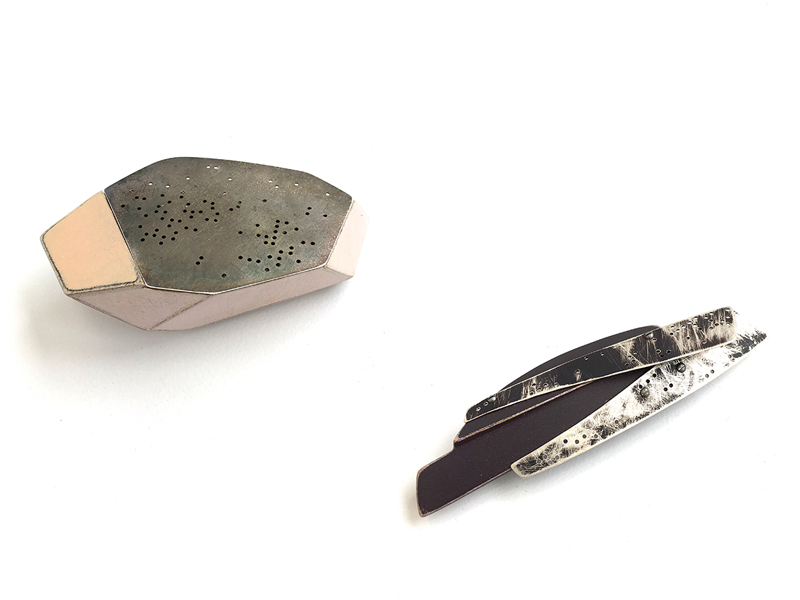
Your studio near Middelburg seems very spacious and uncluttered for a jeweler. Does it serve functions other than jewelry-making?
Carolina Apolonia: Haha! I did clean up for that photo and it’s taken at the right angle! But, yes, it’s large and spacious and sometimes shared with other artists: jewelers, woodworkers, textile artists. Even though I like being alone when I’m working, it’s great to have people around who feel the same love for materials, shapes, detail, tools, etc. People you can share a cup of tea with and who can give you that kick in the butt when you get stuck in your creative process. In that respect it serves the same social function the gallery used to have.
Oh, and the studio is a great place for parties as well!
Is there a direction you would like to take after this current series? Where is your next exploration going to take you?
Carolina Apolonia: Hmm. I have started sketching and I’m doing some material research, mainly with wood, but can’t tell you much about it yet. I’m still at that stage where anything is possible … but I do think the next works will be predominantly in black, which comes as no great surprise!
What have you read recently that has impacted you?
Carolina Apolonia: Today is Wednesday, November 9. The results of the American presidential elections have come in. Shocking news. I’m reading people’s reactions and I fear for what lies ahead.
Thank you.
The prices in this show range from 125–700 euros.
